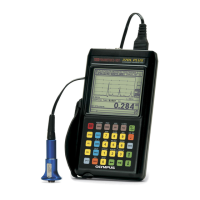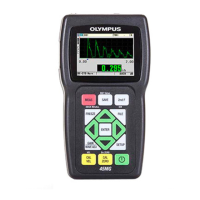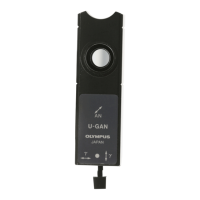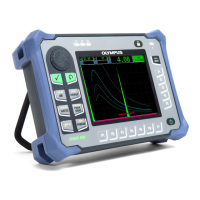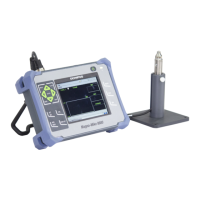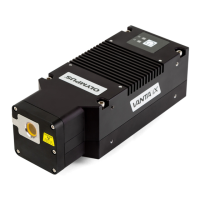DMTA-10004-01EN, Rev. D, November 2016
Chapter 13
232
13.7 Main Bang Blank
The main bang blank is effectively a blank zone that protects the receiver from false
readings generated by the main bang. This blank or dead zone (up to 18 microseconds
from the excitation pulse) prevents the detection of the trailing edge echoes of the
excitation pulse as if they were back-wall or interface echoes. The end of the main
bang blank indicates the point in time where the gage begins to search for echoes.
In general, set the main bang blank just beyond the point where the gage hangs up,
and then test with the transducer both coupled to and uncoupled from the test
material to ensure accurate measurements.
In mode 1, however, the length of the main bang blank determines the minimum
thickness that can be measured, and it must be positioned with care after selecting the
initial gain level (see Figure 13-9 on page 232). When the main bang blank is too short,
the instrument hangs up on the excitation pulse and readings are not possible. When
the main bang blank is too long, the minimum measurable thickness is unnecessarily
restricted. When using immersion transducers, ensure that the main bang blank is
always set before the interface echo from the shortest water path.
Figure 13‑9 Main bang blank position for mode 1
In mode 2 and mode 3, the setting of the main bang blank is not critical when set at
some point between the end of the excitation pulse and the interface echo (see
Figure 13-10 on page 233).
Initial pulse
Main bang blank

